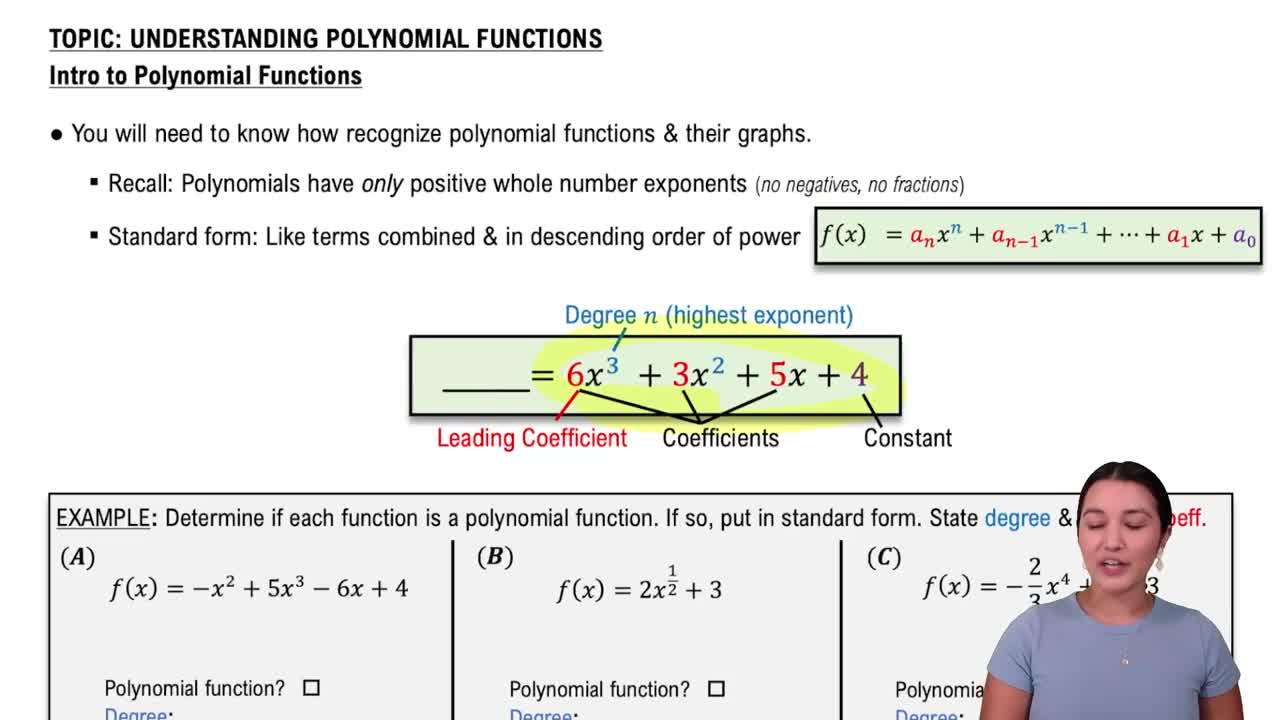Here are the essential concepts you must grasp in order to answer the question correctly.
Factor Theorem
The Factor Theorem states that a polynomial f(x) has a factor (x - c) if and only if f(c) = 0. This means that if you substitute c into the polynomial and the result is zero, then (x - c) is a factor of the polynomial. This theorem is essential for determining factors of polynomials and is often used in conjunction with synthetic division.
Recommended video:
Synthetic Division
Synthetic division is a simplified method of dividing a polynomial by a linear factor of the form (x - c). It involves using the coefficients of the polynomial and performing a series of multiplications and additions to find the quotient and remainder. This technique is faster and more efficient than traditional long division, especially for polynomials of higher degrees.
Recommended video:
Polynomial Functions
A polynomial function is a mathematical expression involving a sum of powers in one or more variables multiplied by coefficients. The degree of the polynomial is determined by the highest power of the variable. Understanding polynomial functions is crucial for analyzing their behavior, including finding roots, factors, and graphing, which are all relevant when applying the Factor Theorem and synthetic division.
Recommended video:
Introduction to Polynomial Functions



